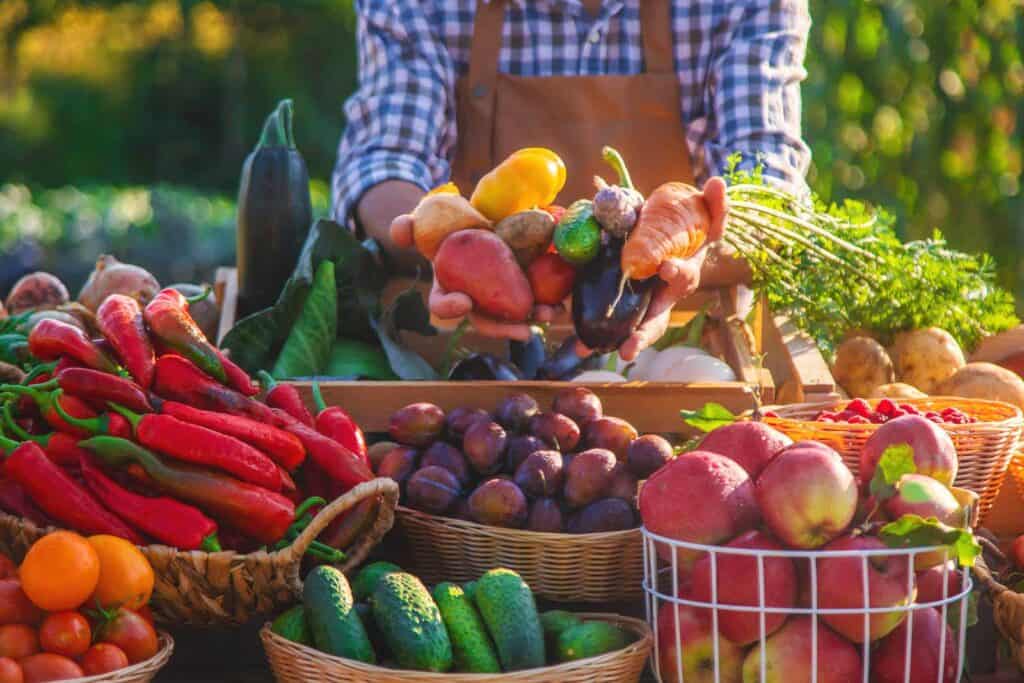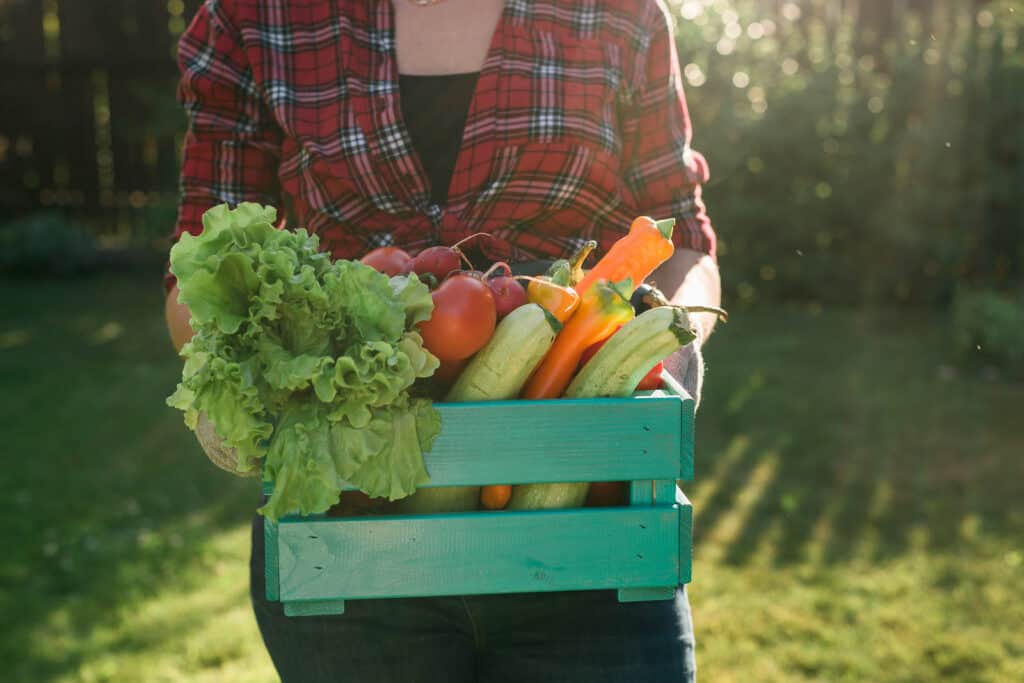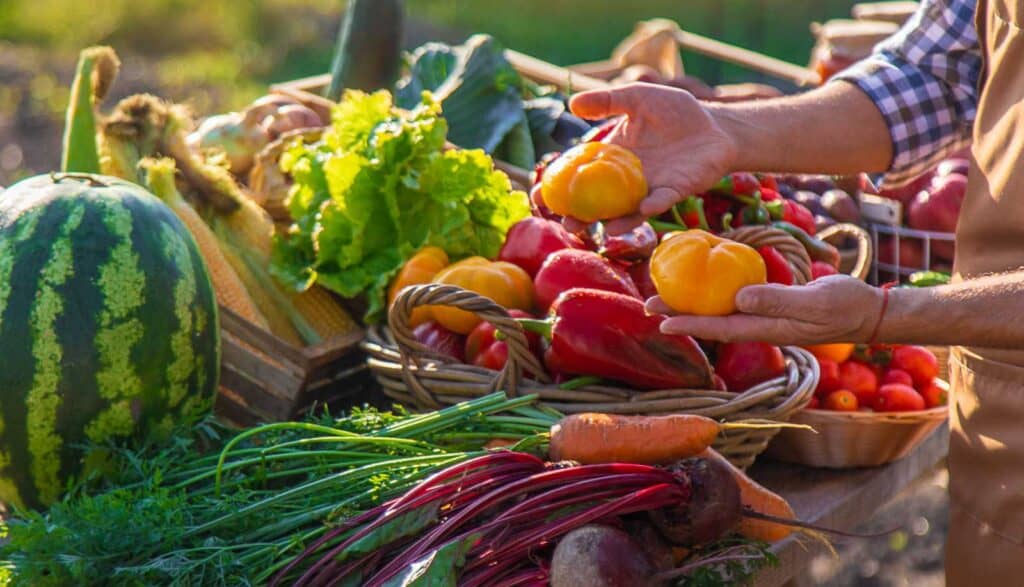Embracing seasonal eating is a great way to try new foods and experiment with different recipes while supporting local farmers and reducing your carbon footprint. By eating foods grown and harvested during their natural growing season, you’ll enjoy a wide variety of fresh, flavorful fruits and vegetables at their peak flavor throughout the year.

Understanding seasonal eating
Seasonal eating is the core component of the farm-to-table movement. It involves eating fresh, locally grown produce harvested when the flavor is at its peak. By embracing seasonal eating, you can enjoy a variety of healthy and delicious foods while supporting local farmers and reducing your carbon footprint.
Benefits of seasonal eating
Eating seasonally has several benefits for your health and the environment. Here are some of the advantages of seasonal eating:
- Better taste: Seasonal foods are fresher and have better flavor than out-of-season foods. This is because they are harvested at the right time and don’t have to travel long distances to reach your plate.
- Support local farmers: When you buy local seasonal produce from farmers, you support your local economy and help to preserve farmland in your area.
- Environmentally friendly: Eating seasonal foods reduces the carbon footprint of your diet. This is because seasonal foods don’t have to travel long distances, reducing the fuel needed to get them to your plate.
Challenges and solutions
While there are many benefits to seasonal eating, there are also some challenges you may face. Here are some of the challenges of seasonal eating and some solutions to help you overcome them:
- Limited variety: Depending on where you live, the variety of seasonal produce available may be limited. To overcome this, try new recipes and experiment with different types of fruits and vegetables.
- Unbalanced growing seasons: Not every season is going to produce the same volume of produce. Planning ahead and using preservation techniques can extend the life of your local produce into the off-season.
- Lack of convenience: Seasonal eating may require more planning and preparation if you’re used to buying pre-packaged and processed foods. To make it easier, try meal planning and preparing your meals in advance.
“My family tries to eat locally sourced, seasonal ingredients as often as possible. While that excludes us from eating fresh strawberries in February in Kansas City, we enjoy the freshness and taste, like supporting local farmers and are glad to reduce our carbon footprint.”
— Sage Scott, Sage Alpha Gal
Identifying seasonal foods
To embrace seasonal eating, you must know how to identify seasonal foods. Visiting your local grocery store is an easy way to identify the most common seasonal foods. Typically, the produce they stock the most and sell for the lowest price will be in-season and available in abundance.
For example, you will see twice as many berries in July for half the price compared to January, when you are more likely to see Brussels sprouts and winter squash on sale. For less common produce and to learn more about what to expect season to season, look for seasonal food charts and local harvest calendars at your local farmers’ market, through a local community-supported agriculture or CSA program or online.
Seasonal food charts
Seasonal food charts typically list fruits and vegetables by season and provide information on when they are at their peak. When using a seasonal food chart, remember that the seasons’ timing can vary depending on your location. For example, if you live in a warmer climate, you may have access to certain fruits and vegetables earlier in the season than someone living in a colder climate. It’s also important to note that not all crops are grown in all regions, so you may need to research what is available in your area.
Local harvest calendars
A local harvest calendar provides information on when specific crops are ready for harvest in your area. They are especially helpful if you want to support local farmers and eat produce grown in your region. When using a local harvest calendar, remember that the availability of certain crops can vary from year to year due to weather conditions and other factors.

Incorporating seasonal foods into your diet
Eating seasonally is a great way to enjoy fresh produce at its peak flavor. Here are some tips for incorporating seasonal foods into your diet.
Meal planning and recipes
One of the best ways to incorporate seasonal foods into your diet is to plan your meals around what’s in season. This not only ensures that you’re eating fresh, flavorful produce, but it can also save you money.
Once you know what’s in season, look for recipes that feature these ingredients. You can also experiment with your recipes. For example, when lemons are in season, try roasting them with salmon, dill and asparagus for an easy one-pan meal. Or, if apples are in season, try making a homemade apple crisp or adding sliced apples to your oatmeal in the morning.
“Nothing makes me feel more prepared for winter than preserving seasonal foods. Whether I’m making pickles, dehydrating summer fruits or canning salmon, it feels empowering to have a pantry full of food we put up ourselves.”
— Laura Sampson, Little House Big Alaska
FDL’S 75 Best Bites

Our cookbook with 75 tasty recipes will be your go-to kitchen companion for easy dinners with ad-free recipes right at your fingertips. Crafted by experienced chefs and recipe developers, this collection offers a treasure trove of tried-and-true dishes that make mealtime a breeze.
Get the Recipe: FDL’S 75 Best Bites
Preservation techniques
If you want to enjoy seasonal foods even when they’re out of season, preservation techniques can help. Since the fresh produce you will preserve is locally sourced and harvested at peak freshness, you still get the benefits of seasonal eating while out of season. Here are a few methods to try:
- Freezing: You can freeze many fruits and vegetables for later use. Simply blanch them first, then freeze them in airtight containers.
- Canning: Canning is a great way to preserve fruits and vegetables for long-term storage. You’ll need some specialized equipment, but the result is worth it.
- Drying: Drying is another method of preservation that works well for fruits, vegetables and herbs. You can use a dehydrator or dry them in the sun.

Supporting local and sustainable practices
Eating seasonally involves supporting local and sustainable practices and positively impacting the environment. This means you are buying produce grown nearby, supporting the local economy and reducing the environmental impact of transporting produce long distances. Here are two ways to support local and sustainable practices:
Community-supported agriculture
Joining a community-supported agriculture or CSA program is a great way to support local farmers and get fresh, seasonal produce. CSA programs allow you to buy a share of a local farm’s harvest for a season. You will receive a weekly or bi-weekly box of produce that is in season and grown locally.
Farmers’ markets and local farms
Another way to support local and sustainable practices is by shopping at farmers’ markets and local farms. These places offer fresh, seasonal produce that is grown nearby. You can also ask the farmers about their growing practices and learn more about where your food comes from.
Renee N Gardner is the creative mastermind behind Renee Nicole’s Kitchen, a recipe blog based on seasonal ingredients, dedicated to helping home cooks build their kitchen confidence to become home chefs. When Renee isn’t writing, developing recipes or photographing food, you’ll find her in the garden, traveling or enjoying the outdoors with her husband, son and two dogs.